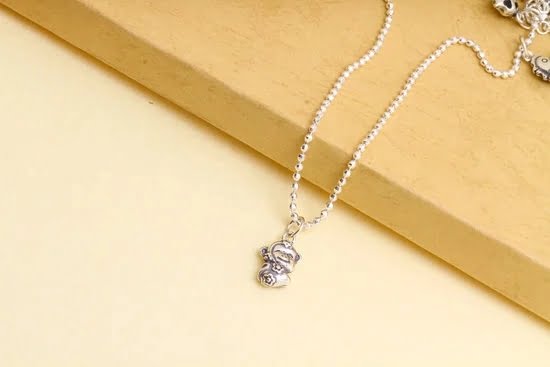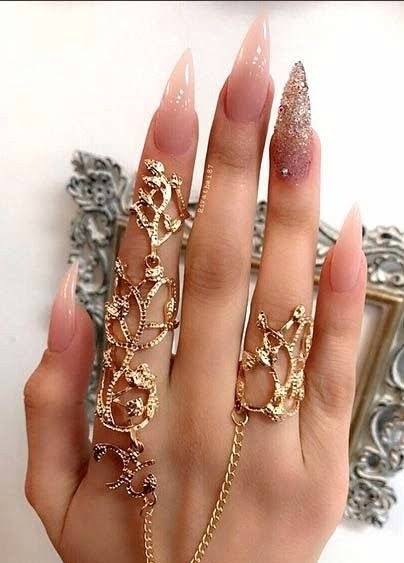You can often find yourself wondering if it’s okay to use jewelry cleaner on stainless steel jewelry. On the one hand, you want your jewellery to look like new, but on the other hand, you don’t want to risk damaging it or having your stones fall out.
So, what many people really want to know is – will jewelry cleaner hurt stainless steel jewellery? Read on for more information about jewelry cleaner and how safe it is to use on your stainless steel trinkets.
The answer as to whether or not using jewelry cleaner on stainless steel jewelry will harm it is yes and no.Jewelry cleaner is typically seasoned with ammonia and, depending upon the grade of stainless steel used in your piece of jewellery, this may result in tarnishing or discolouration of the metal itself. For example, pure silver pieces should never be treated with a jewelry cleaner as ammonia could cause damage.
However, if you are dealing with a higher grade or quality of stainless steel like 316L then ammonia-based cleaners are usually safe for use without causing serious damage.So if you have any doubts as to the grade of stainless steel involved in your pieces – be sure to speak with a professional before embarking on any cleaning efforts.
As a general rule of thumb, professional jewelers suggest using warm soapy water for cleaning most grades of stainless steel jewelry in order to ensure that no unnecessary damage occurs. This method is especially effective at removing oils and sweat from your items which can often dull the appearance over time without proper cleaning.
However if necessary, mild non-abrasive detergents can also be also used in combination with warm soapy water to further aid in removing dirt or grime from your pieces while still providing adequate protection for your jewellery’s finish.
For those who wish to take extra precautions when dealing with their jewellery – utilizing an alternate form of cleaning such as ultrasonic cleaning would be ideal for thorough and safely removes dirt without damaging metals surfaces like ammonia based cleaners sometimes can do. Ultrasonic waves lift dirt particles away from metal surfaces much like the ones found in commercial machines but scaled down for small spaces (homes).
To take full advantage of this method – there are several specialty products available for purchase online which will help ensure that any dirt particles that cannot normally be seen by eye (nanoparticles) have also been removed Additionally they come equipped lengthy warranties – allowing additional peace of mind and assurance that damages won’t occur during usae due manufacturer errors.
Ultimately whether using mild soap & warm water or specialized ultrasound systems – knowing exactly what type of materials are involved prior too any cleaning project will help keep all assets looking good as new while ensuring their longevity.
What is Stainless Steel Jewelry?
Stainless steel jewelry has been popular among consumers for several decades. It is a durable and long-lasting metal alloy that comes in a wide variety of styles, sizes, and colors. Stainless steel is hypoallergenic, meaning that it does not react with the human body or cause allergic reactions.
This alloy is also resistant to tarnishing, rusting, and corrosion. Due to its affordable price tag and impressive quality, stainless steel jewelry has become increasingly popular among all types of consumers who prefer contemporary style accessories.
Components of Stainless Steel Jewelry
Stainless steel jewelry contains several different components, including iron and chromium. Iron provides strength and durability to the alloy by making up at least 10% of the material’s overall composition. Chromium offers resistance to oxidation and enhances its corrosion resistance capabilities by increasing the amount of chromium in the alloy. Other trace elements are often combined with these components to create new colors or patterns for decorative purposes.
Care Suggestions for Stainless Steel Jewelry
The care required for stainless steel jewelry depends on how it’s used; however, some general maintenance tips can be followed in order to ensure optimal long term enjoyment:
- Remove your stainless steel jewelry before exercising or participating in any physically demanding activity.
- Avoid exposure to chemicals such as chlorine, cleaning products, etc.
- To clean your stainless jewelry, use a cloth dampened with warm soapy water.
- Rinse off the soap residue with cold clean water and then pat dry with a soft lint-free cloth.
- Store your stainless steel jewelry away from other pieces of metal.
What is Jewelry Cleaner?
Jewelry cleaner is a chemical product used to clean and polish jewelry. It is typically composed of alcohol, a surfactant, and an agent to protect the color of the metal being cleaned.
In most cases it is recommended for cleaning gold jewelry, but may also be effective on silver, platinum, and sometimes even brass jewelry. The ingredients list will vary depending on the brand and type of jewelry cleaner being used, so it’s important to read any instructions that come with your cleaning product prior to use.
How Does Jewelry Cleaner Affect Stainless Steel?
Stainless steel is known for its strength and resilience against corrosion but can also be very vulnerable when exposed to harsh cleaners or chemicals. Depending on the treatment given to stainless steel jewelry, jewelry cleaner may be safe to use. It is important to read the ingredients in your chosen cleaner before using it on stainless steel jewellery in order to ensure it doesn’t contain any harsh substances that will harm or damage the metal.
If you wish to use a commercial jewelry cleaner on stainless steel jewellery then opt for one designed specifically for this purpose as they are much less likely to contain harmful chemicals than generic cleaners are. Regular sweeping or dusting over this type of jewellery can help preserve its original shine without having to resort to chemical or abrasive solvents and avoids further exposure of your stainless steel pieces.
Tips for Cleaning Stainless Steel Jewelry
It’s always preferable to use gentle solutions and techniques when cleaning stainless steel jewellery as opposed to harsh chemicals which could potentially harm the item instead of helping maintain it. These include:
1 – Soaking in hot Water
The simplest gentle technique is soaking your jewellery in warm water mixed with a mild dish detergent then rinsing off with cold water afterwards – this should help preserve its original shine while removing any dust particles collected throughout wear time This process typically takes just a few minutes but remember not leave them soaked for too long as this could cause discolouration or tarnishing.
2 – Brushing with Soft Brush
Another good option you can try at home is brushing over your stainless steel items with an old soft toothbrush – repeating this method from time-to-time will help prevent tarnish build up due to oils often collected during wear time as well as providing a nice overall shine once complete.
You should also be sure not scrub too forcefully whilst brushing as doing so could damage the jewellery itself or cause accidental scratching if there is glittery stones entwined into design pieces.
3 – Avoid Contact with Harmful Chemicals
Lastly try avoiding contact with certain chemicals such chlorine found within swimming pools which could have damaging effects if left wet onjewelery items throughout extended periods; ditto applies makeup remover wipes too which often found their way near essential jewelleries such s rings during regular engagements – particularly amongst preoccupied ladies.
How to Use Jewelry Cleaner on Stainless Steel Jewelry
- Test the cleaner on a hidden part of the jewelry before using.
- Wear gloves, if available, to protect your skin from the jewelry cleaner.
- Read and follow manufacturer instructions for product usage.
- Apply a small amount of the cleaning solution to a soft cloth or toothbrush.
- Avoid contact with stones or other items that may be subject to damage from the chemicals.
- Gently scrub all areas of the stainless steel jewelry.
- Rinse stainless steel item with warm water.
- Remove any remaining detergent or residue on the item by wiping it with a soft cloth.
Using jewelry cleaner on Stainless Steel is possible however safety measures must always be taken to avoid causing harm and damaging both body and item.
Firstly, it’s very important to test any jewelry cleaner on a hidden part of the steel before applying it elsewhere. This ensures that it will not damage the item, as some cleaners are corrosive or have high acidity levels which may cause serious issues. Additionally, wearing gloves when handling any type of cleaning solution protects skin from discolouration as well as possible burns.
Secondly, following manufacturer instructions for proper product application will ensure that we use it correctly and get the desired results in terms of brightness and shine. When applying, start by using only small amounts of solution onto a soft cloth or even an old toothbrush. This helps prevent too much direct contact between metal surfaces and harsh solutions which could lead to erosion and long-term damage.
Finally it’s wise to take special precautions with items such as stones where possible damage may occur due excessive exposure in strong cleaners. After completing each cleaning cycle don’t forget to rinse away all residual chemicals and remove them with a dry white cloth for ideal results before further handling.
Benefits of Using Jewelry Cleaner on Stainless Steel Jewelry
Jewelry cleaner is a great way to bring life back into stainless steel jewelry. It can help restore dull metal to its gleaming and lustrous original state, making it look brand new. Jewelry wearers love using jewelry cleaning agents on their pieces as it can easily restore things such as:
- * Engraved rings with raised lettering
- * Bracelets and necklaces with rhodium plating
- * Pendants decorated with enamel paint
- * Watches with intricate designs or carved grooves
- * Earrings adorned in diamond chips
Steps for Cleaning Stainless Steel Jewelrywith Jewelry Cleaner
To properly clean stainless steel jewelry with jewelry cleaner, there are a few steps that should be followed. Initially, the item must be washed gently in warm water and dish soap to remove any debris and dirt off of it. Make sure not to use harsh scrubbing motions as this could damage the piece.
Afterward, submerge the piece into a small container filled with jewelry cleaner solution for 30-60 seconds. Lastly, use a soft cloth to dry and remove any excess residue off of the metal surface of the piece before wearing or storing it away safely.
Risks of Using Jewelry Cleaner on Stainless Steel Jewelry
Using jewelry cleaner on stainless steel jewelry may result in damage to the item being cleansed. This type of product can contain harsh chemicals such as bleach and ammonia, which can be harmful to certain types of metals. Stainless steel is particularly vulnerable due to its high-quality metal. If chemicals remain in contact with it for too long, they can start to break down the molecules and weaken the structure.
This would make it harder for the item to maintain its attractive sheen and might also cause scratches or dents in some cases. As a result, it’s important to exercise caution while using any kind of jewelry cleaner on stainless steel items. Jewelers often recommend that stainless steel be washed separately from other metals that may react with the chemicals in the cleaning solution.
Another risk of using jewelry cleaner on stainless steel is corrosion. Although this type of metal is generally resistant to corrosion, using products that contain too much acid or alkaline may cause pitting or discoloration if not wiped off efficiently right away. Therefore, it’s always best to follow instructions when using these kinds of cleaners and use only enough solutions as needed in order to properly clean an item without risking any damage over time.
Finally, while stainless steel isn’t usually prone to tarnish, if certain pieces are exposed for too long they could develop a dull appearance over time which would be difficult, if not impossible, to reverse through further cleaning efforts.
Too much exposure to jewelry cleaner could hasten this process which means that shoppers should take pains before opting for sale items crafted from this metal so they know exactly how much care and what kind of treatments are necessary in order keep their beautiful new finds looking just as good later on down the line?
Alternative Ways of Cleaning Stainless Steel Jewelry
Stainless steel jewelry is a popular choice because of its durability and attractive finish. Unfortunately, it can also become dull over time, causing it to appear dirty and tarnished. Cleaning stainless steel jewelry can be tricky as some methods may cause more harm than good.
The most important thing to remember when attempting to clean stainless steel jewelry is that harsh chemicals and abrasives will damage the piece. It is important to use gentle cleaning techniques in order to avoid leaving scratches or weakening the structural integrity of the piece. Additionally, you want to avoid using products that contain chlorine or ammonia as these can discolor or corrode the metal.
Alternative Ways of Cleaning Stainless Steel Jewelry
- A simple solution of mild soap and warm water is often effective for basic cleaning jobs. Gently use a soft toothbrush or cloth to wipe away dirt and dust.
- White vinegar diluted with warm water (half and half) can also help remove grease and dirt from stainless steel pieces. Simply soak the items for about 10 minutes before wiping them off with a damp cloth.
- To restore shine, mix together dish soap and baking soda to create a paste-like substance. Rub the mixture onto the stainless steel using a soft cloth in a circular motion. Rinse it off using warm water afterwards.
- If your piece has significant dirt buildup, consider investing in special cleaners specifically designed for stainless steel jewelry that are available from craft stores.
Conclusion
Jewelry cleaners are intended to be used on jewelry like silver, gold and other precious metals and stones. Strictly speaking, you should not use jewelry cleaners on stainless steel jewelry because it can cause the material to rust or corrode. While many stainless steel pieces may appear similar in style to those that are made from precious metals, they require different products and procedures for cleaning.
When cleaning stainless steel jewelry, it is important to avoid products with harsh chemicals such as bleaches or ammonia-based solutions. If required, mild soap and warm water can be used on a soft cloth, scrubbing gently to remove any grime or debris from the surface of the stainless steel piece. After cleaning, make sure that the jewelry is rinsed thoroughly and dried completely before storing.
At the same time, it is important to take good care of your stainless steel jewelry by avoiding contact with certain materials which may cause discoloration or damage over time. These include items like chlorine or salt water which could cause permanent damage if left in contact for a long period of time.
It is also best practice to clean and store your jewelry away from direct sunlight which can cause fading or discoloration too. By following these simple steps you will be able to ensure your stainless steel pieces remain beautiful for years to come without using harsh chemical cleaners that can potentially harm them instead.
Overall, while jewelry cleaner should not be used on stainless steel pieces due to potential damage it could have on this type of material, there are some effective methods which should be utilized in order to care for your stainless steel pieces properly.
Using mild soaps with warm water along with carefully avoiding all materials that could spark corrosion or damaging effects are key best practices for preserving your jewelry’s condition long term – ultimately keeping their shine intact for many years down the road.

Welcome to my jewelry blog! My name is Sarah and I am the owner of this blog.
I love making jewelry and sharing my creations with others.
So whether you’re someone who loves wearing jewelry yourself or simply enjoys learning about it, be sure to check out my blog for insightful posts on everything related to this exciting topic!





